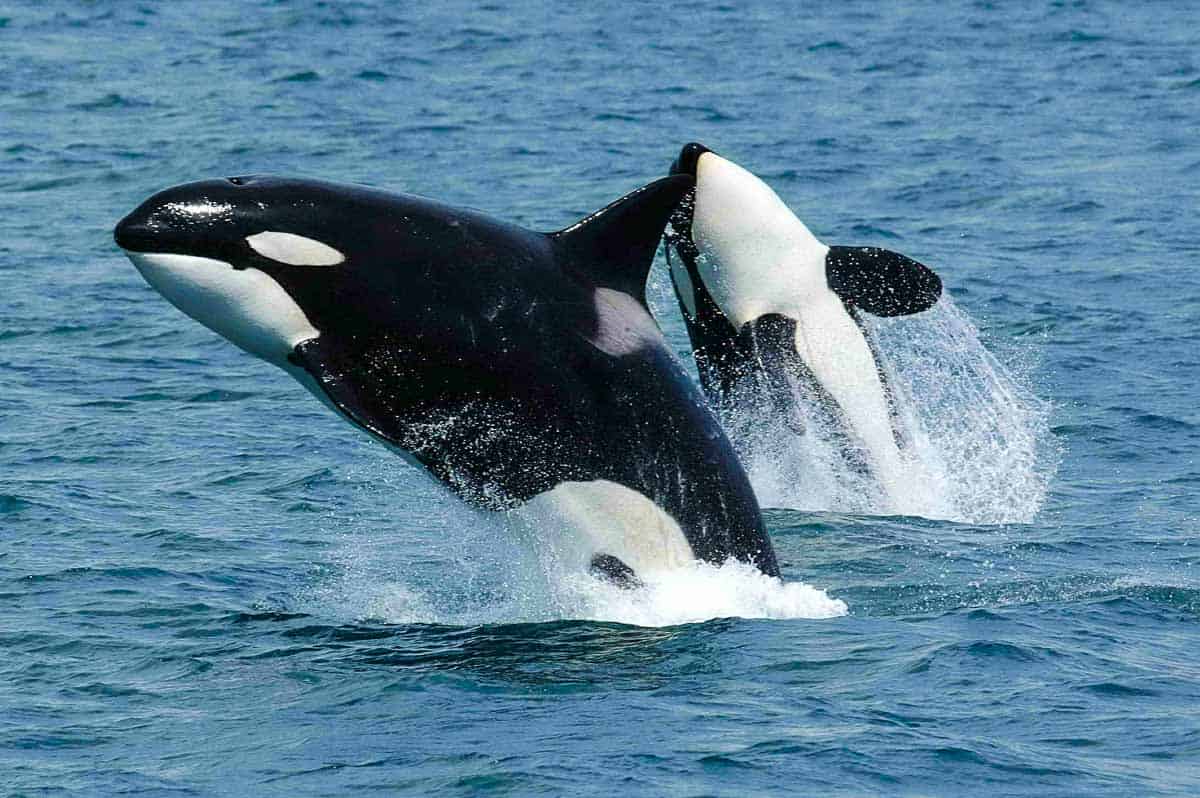Great white sharks have long been considered the apex predator of the ocean. Their portrayal in films such as “Jaws” has only added to their reputation as the most feared animal in the ocean, with occasional attacks on humans being widely reported around the globe. Not only do they hunt seals, dolphins, and a variety of fish species, but they play an essential role in maintaining diverse and healthy ecosystems.
However, in recent years, orca whales killing great white sharks have been shaking up the seas by preying on great whites, mutilating their bodies, and gorging on their livers. It is a phenomenon that has given many in the scientific community cause for concern as the loss of healthy great white populations could have a significant impact on ecosystems. Killer whales have been known to eat sharks in the past. But it is the increasing frequency of the attacks and the way in which they are doing it that is making headlines. This informative article will discuss an in depth comparison between Orca vs Great white sharks.
APEX PREDATION: ORCA VS GREAT WHITE SHARK
How are Orca Whales managing to kill Great White Sharks?
Orcas whales attack sharks in surprising ways. Aside from driving them to the surface and swiping them from above with their tails, they have also been observed holding them upside-down to induce a paralytic state known as “tonic immobility”. But it is the almost-surgical removal of their livers that is the most baffling.
South Africa’s False Bay was one of the first places this was observed. In 2015, there was the discovery of several dead sevengill sharks within Table Mountain’s marine protected area. The area is renowned for its shark sightings, with up to 70 sharks previously recorded here on a single dive.
The encounter was startling, and fingers were initially pointed at humans. It was only once the corpses were recovered for examination that the truth was revealed. The sharks had been attacked by killer whales and had their livers removed.
Researchers got to work trying to figure out the change that had taken place in the ocean by reviewing killer whale behavior and dietary specialization. Based on their findings, they hypothesized that a sub-group of killer whales that feed on sharks offshore had arrived in False Bay. When killer whales kill great white sharks, they ultimately alter the food chain.
Around the same time, a local whale watching tour operator observed the arrival of two new killer whales in the bay. They were distinguished by their bent over dorsal fins, unlike the killer whales regularly seen along the coast. Interestingly, they were observed near the site where the sevengill sharks had been found dead. Two years later, another five great white sharks were also killed along the coast in Gansbaai. The same two killer whales are believed to have been responsible.
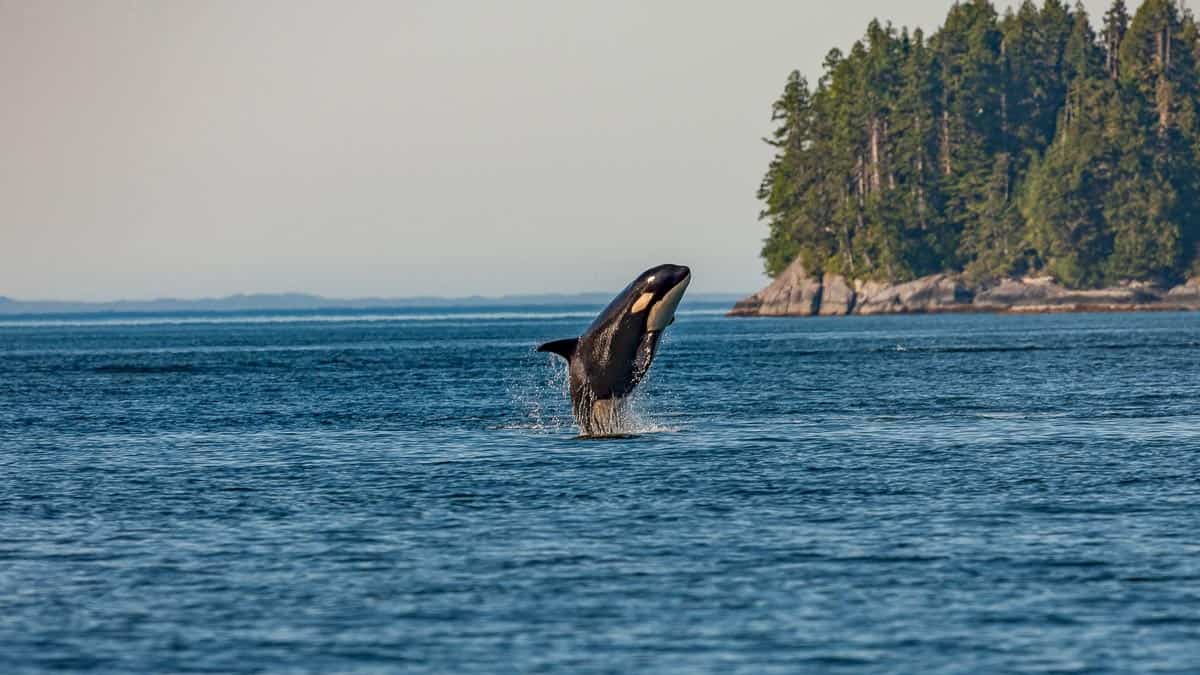
Why are Killer Whales feeding on Great White Sharks?
The scientists who examined the carcasses noted that the wound patterns between the pectoral fins of the sharks were the same, and their livers were missing. However, all their other organs, such as the heart and stomach, had been left intact. The distinct bite marks were thought to have been from a flat-toothed offshore killer whale. Up until recently, these had rarely been seen in coastal waters and generally hunted further out at sea. With no bite marks visible on other parts of the body, it is believed that they deliberately and meticulously dissected the body under the pectoral fins to get at the liver – an organ that’s weighty and rich in fat.
Killer whales are known to prey on animals that have a lot of rich blubber. It appears that whales kill sharks specifically for their livers, which have high concentrations of oils and fats. The main component is squalene, which stores energy and provides buoyancy in the absence of a swim-bladder. Shark livers have also shown to contain high total lipid contents, meaning their energy density is higher than that of whale blubber. They’re also quite large compared to other sea creatures (around 5% of the shark’s total body weight). This makes them a good source of energy for killer whales. Not only are they packed with fats and protein but also vitamin C, folate, iron, vitamin B12, niacin, riboflavin, vitamin A, vitamin B6, sodium, and carbohydrates.
The precise marks on the sharks’ bodies indicate that some killer whales have learned that encountering a great white means a nutrient-rich feed. So logically, they act accordingly and kill. During one encounter off the Farallon Islands, a group of whale watchers saw a killer whale ramming into the side of a great white shark. This behavior momentarily stunned the shark, allowing the orca to flip it over and hold it down to create a natural state of paralysis. After around 15 minutes, the orca began removing the liver of the shark.
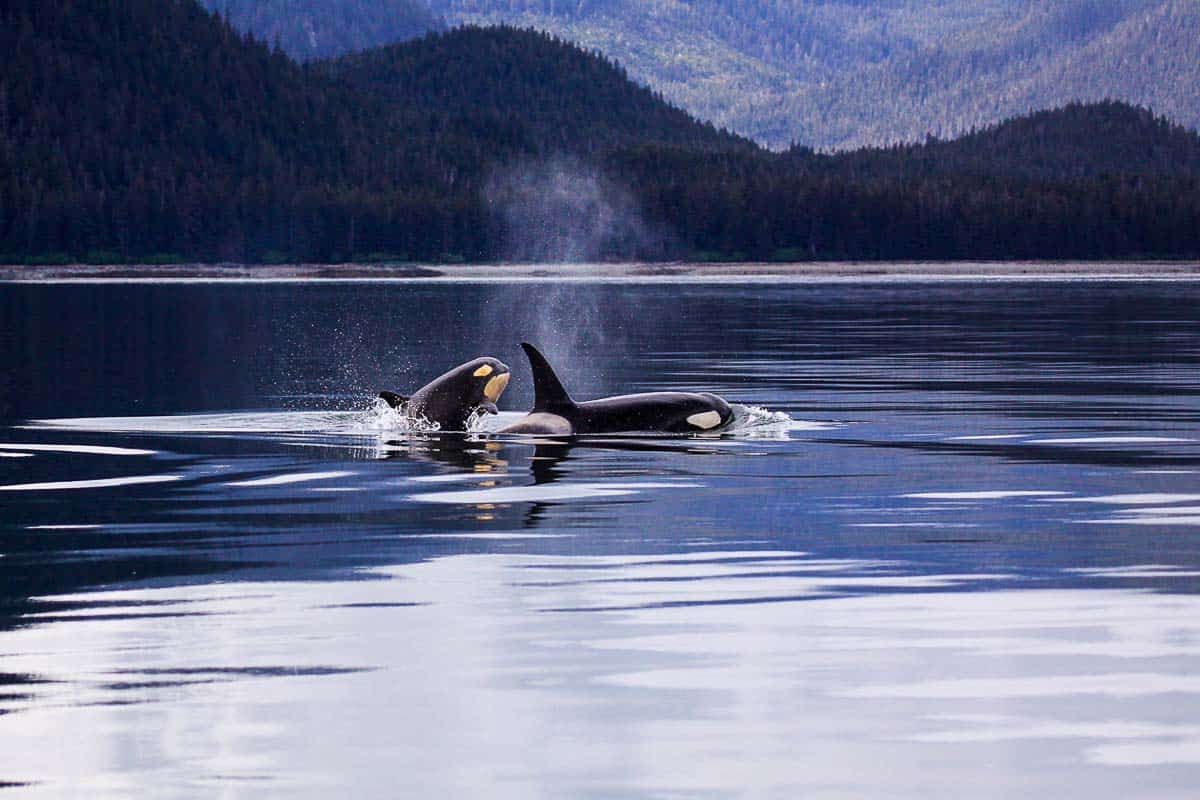
How are Great White Sharks responding?
It is not the first time that the impact of killer whales on great white shark populations has been observed. Salvador Jorgensen from the Monterey Bay Aquarium has been observing their relationship for years within the Greater Farallones National Marine Sanctuary off the coast of California. Since 2006, his team has been radio-tagging sharks around Southeast Farallon Island where they feed on young elephant seals between September and December.
It was noted that as soon as a pod of killer whales entered the waters, the sharks made a bee-line out of the area. Most did not return for the rest of the season. This was observed time and time again, even if the orcas were simply passing through en route elsewhere. The sharks had learned of the threat and were not going to take the chance. So instead of staying in the best feeding grounds, they moved elsewhere in search of prey.
Jorgensen’s team also recorded the number of elephant seals that were eaten by sharks in years when orcas made an appearance. Their findings indicated that there was a drop of up to 62% when orcas were in the region. This is a significant shift in the food chain and could have a drastic knock-on effect on the local ecosystem. If sharks are not feeding on the seals, then the seals are free to gorge on fish, and their populations will likely decline.
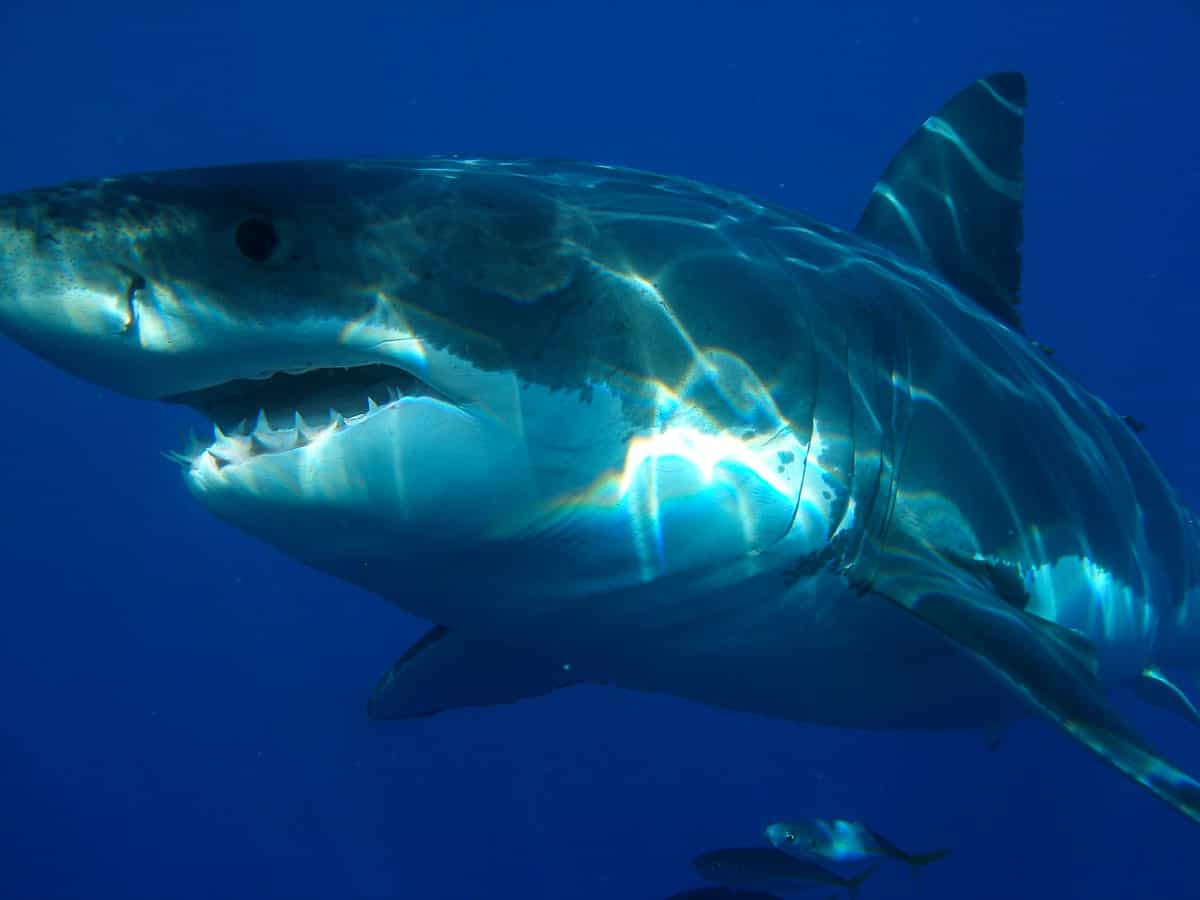
APEX OCEAN PREDATION
Upsetting the Ecosystem
The killer whales have created what’s been referred to as a “landscape of fear”, even chasing away fearsome predators like great white sharks. Rather than face being killed and having their livers extracted, sharks are redirecting their hunting activity to safer waters. The risk for humans is when these hunting grounds become closer to shore, and great whites start patrolling recreational waters.
But there are also significant risks for coastal ecosystems, as can be seen from a case study in Alaska. During the 1990s, killer whales began targeting sea otters across the Aleutian Islands, resulting in a massive decline in numbers. As a result, the sea urchins (which sea otters fed on) exploded in abundance and razed the kelp forests of the region with devastating consequences.
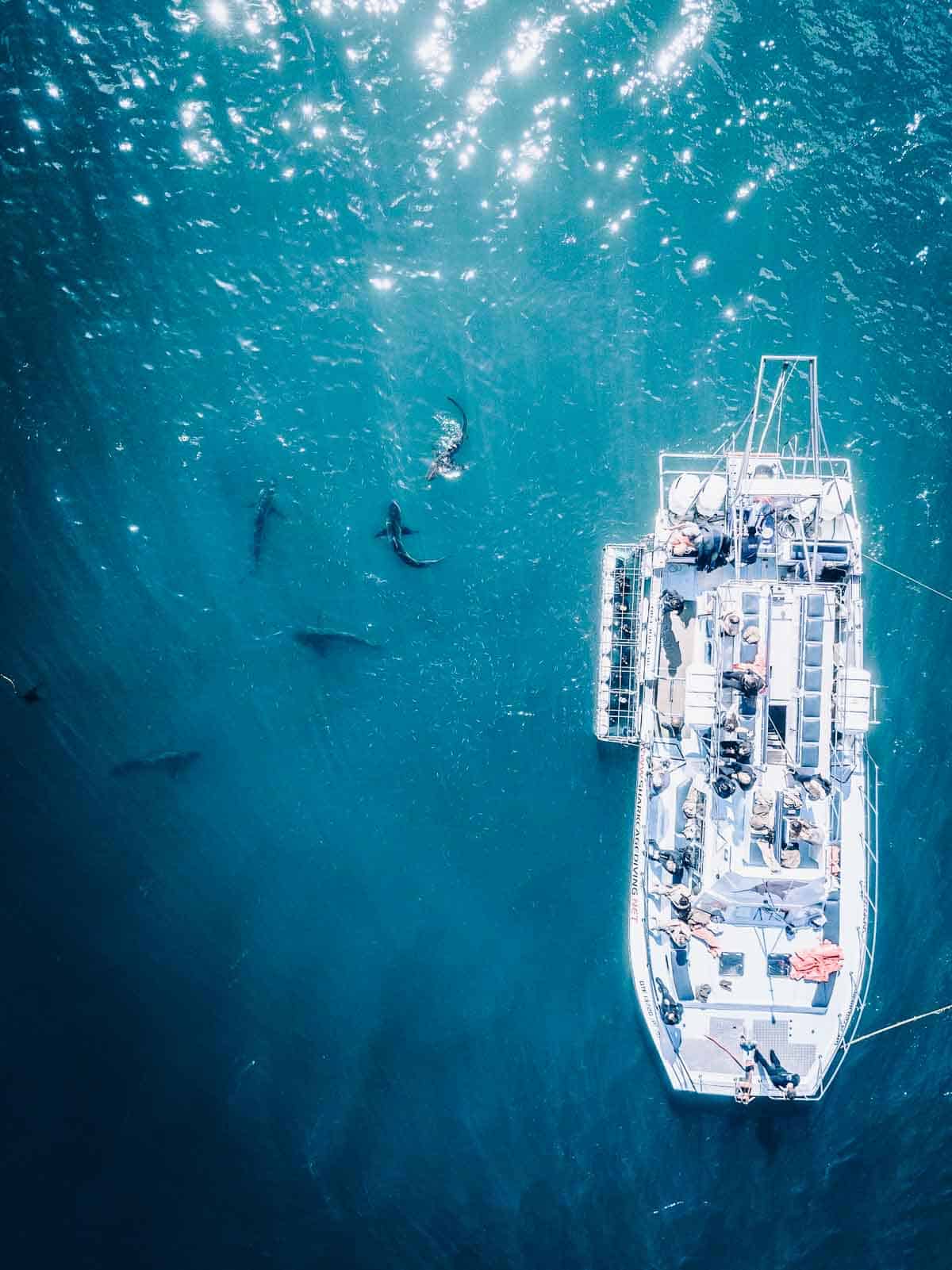
Why have the Hunting Patterns of Killer Whales changed?
Scientists studying this natural event believed that a decline in prey species in offshore areas led the killer whales to move closer to the coast and start targeting sea otters. The same may be the case for the killer whales moving closer to shore in South Africa and hunting down great white sharks. Researchers are still getting their heads around the “why” and “how”. But there’s speculation that the presence of killer whales and their hunting of sharks could have a profound impact on the local ecosystem. While a great white shark may be seen as a threat to humans, its role in managing a balanced ecosystem is critical to maintaining a healthy ocean.
There have been accounts of killer whales killing great white sharks for decades. However, it is the rise in the frequency of the attacks that are of concern. Some scientists believe that it may be due to the changing ranges of the animals. As fishing restrictions have been put in place, some shark populations have grown and expanded. Others think global warming may be expanding the geographical areas in which sharks can survive. This means that sharks and killer whales are living in closer proximity than before. Another hypothesis is that the usual source of nutrition for killer whales is running low, which is why they’re turning to great white sharks as an alternative.
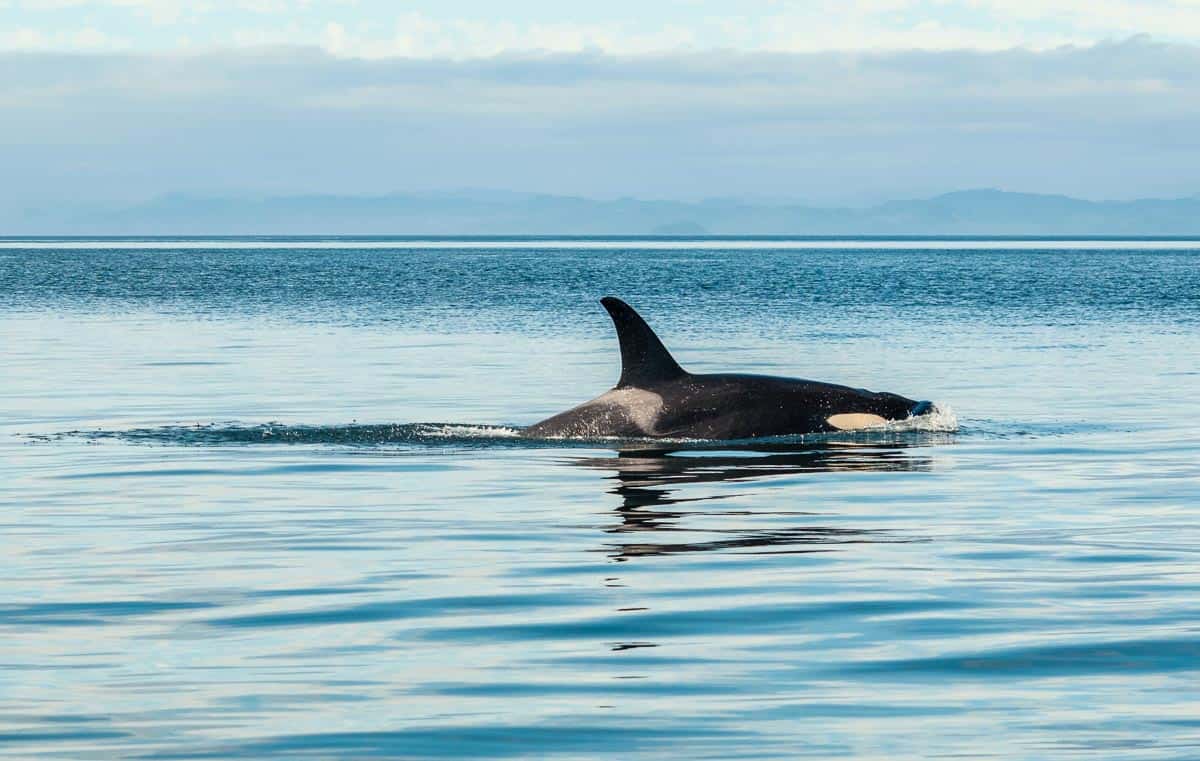
THE MATCHUP
Great White Shark versus Killer Whale (Orca)
Great White Sharks
(CARCHARODON CARCHARIAS)
Great white sharks are large mackerel sharks that are found in the surface waters of all the world’s major oceans. They can grow up to 20 feet (6.1 meters in length) and weigh up to 4,200 pounds (1,905 kilograms) when mature, with some living as long as 70 years or more. Great white sharks are a primary predator of a variety of marine animals, including fish and seabirds. They can swim at speeds of over 35 miles per hour (56 kilometers per hour) and to depths of 3,900 feet (1,200 meters).
The behavior and social structure of sharks are not well understood. They’re believed to hunt alone and have been known to bite one another if approached too closely. It is one of only a few shark species that lifts its head above the surface of the water to observe prey in a behavior known as “spy-hopping”. Great whites are carnivorous eaters. They feed on a diverse range of fish, cetaceans, sea turtles, and sea otters, as well as sea birds when the opportunity arises. They like prey with energy-rich fats and are renowned for their ability to detect blood in the water from great distances.
Cage diving with great white sharks has become a popular adrenalin activity in coastal regions frequented by the animals, including South Africa, Baja California, and South Australia. Many tourism operators chum the water with pieces of fish to lure the sharks. There is a concern by some that this is exacerbating the problem of unprovoked great white shark attacks on humans in the surrounding waters. Despite its reputation as a predator killer in “Jaws” and occasional attacks recorded on humans, great white sharks are listed as a vulnerable species by the IUCN. Also, they are protected by many governments around the world.
Killer (Orca) Whales
(ORCINUS ORCA)
Killer whales (also known as orcas) are the largest member of the oceanic dolphin family. They can grow up to around 30 feet (9 meters) in length and weigh up to 14,550 pounds (6,500 kilograms). Their large size and strength allow them to reach speeds over 35 miles per hour (56 kilometers per hour). While this is similar to great white sharks, they can sustain these speeds over greater distances. Orcas can be found in all of the world’s oceans, including the Arctic and Antarctic regions. They socialize in matrilineal pods that are among the most stable of any animal species.
Killer whales are renowned for their sophisticated hunting techniques, with their prey including seals, dolphins and baleen whale calves. Some populations are considered threatened or endangered by the IUCN due to habitat loss, prey depletion, and pollution. In some cases, orcas have also been captured for use in marine theme parks. It is in these settings only that attacks on humans have been recorded. Killer whales have long been intertwined in the mythologies of indigenous peoples. Some groups revere them as the souls of humans, while others believe they are merciless killers.
Generally speaking, there are three different types of killer whales. Some scientists believe they may be distinct enough to be separate subspecies:
Resident killer whales are those most commonly sighted along the coast, and they return to the same areas year after year. They feed primarily on fish and squid in family pods and are characterized by their rounded dorsal fin, which ends in a sharp corner.
Transient killer whales roam widely along coasts and travel in smaller groups. They are also referred to as Bigg’s killer whales after cetologist Michael Bigg. Transient killer whales feed on marine mammals such as seals and sea otters and have a more pointed dorsal fin compared to resident killer whales. They also exhibit a solid grey or white area around their dorsal fin that’s known as the “saddle patch”. This differs from resident killer whales whose patch exhibits some black coloration.
The third type are offshore killer whales and were only discovered as recently as 1988. As a result, they are the least studied of the three groups. They travel and feed far from coastal areas in large groups of up to 200 individuals. However, they appear to be smaller and with a continuously rounded dorsal fin tip that distinguishes them. While they feed primarily on schooling fish, it is also believed that they eat marine mammals and sharks. It is these killer whales that are thought to be the culprits in the great white shark attacks seen recently in South Africa.
COMPARING SIZE
Is an Orca bigger than a Great White Shark?
Orcas can grow around 10 feet longer than great white sharks, which is why it is no surprise they might eat them if given the chance. But it is also their ability to sustain speeds of up to 35 miles per hour that gives them a competitive edge. While a great white shark can reach similar speeds in short bursts, orcas can maintain their speed for much longer due to their long bodies and powerful tails.
The sheer size and weight of killer whales also give them a competitive edge when comparing an orca vs a great white shark. As has been observed in the wild, they can ram great white sharks to paralyze them momentarily. It is in this state that they make their final, biting blow to kill the shark before extracting its liver.
FINAL THOUGHTS
Apex Predation:
Orca vs Great White Shark
Do killer whales eat sharks? The answer is yes. For many years, great white sharks have held the title of apex predator in the ocean, with their rows of razor-sharp teeth only adding to their fearsome image. But evidence shows that orca whales eat sharks for their nutrient and fat-rich livers. Killer whales can rival great whites for being brutal killers, drawing on their exceptional stamina and ability to travel huge distances in search of prey.
Orcas will eat almost anything they can catch and get their jaws around, and sharks are no exception. They have learned that shark livers are an energy-rich source of food and can provide an easy feed when other prey sources are lacking. As global conditions change, distribution patterns overlap, and the usual sources of nutrition for killer whales decline. As a result, the attacks on great white sharks may only become more frequent. While killer whales eating a shark does not bode well for the great whites, the good news is that they do seem to be learning and adjusting their behavior based on the threat.
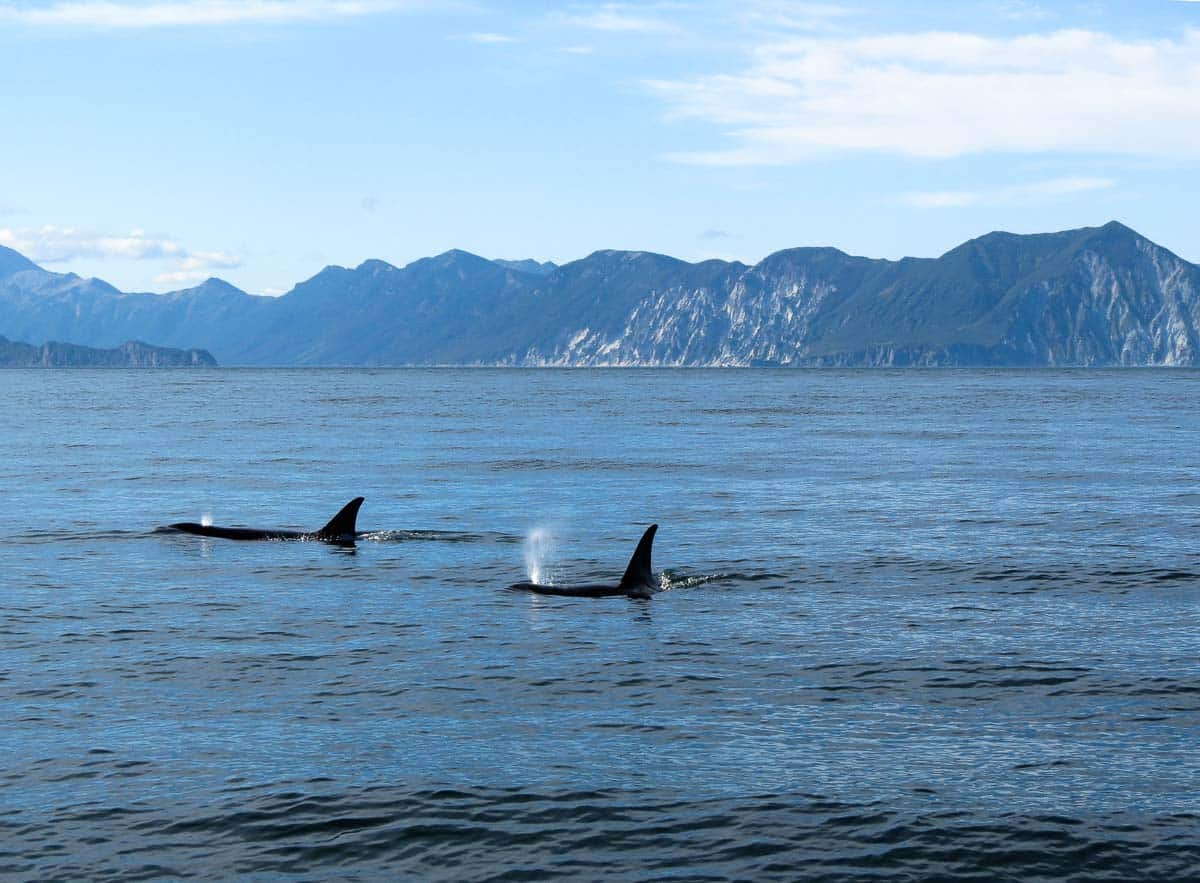
SOURCES
Apex Predation:
Orca vs Great White Shark
- Orcas Are Killing Great White Sharks and Feasting On Their Livers, newsweek.com
- The Predator That Makes Great White Sharks Flee in Fear, theatlantic.com
- Orcas vs Great White Sharks: In a Battle of the Apex Predators Who Wins?, theguardian.com
- Great White Sharks are Completely Terrified of Orcas, smithsonianmag.com
- Killer Whales Have Begun Preying On Sea Otters, Causing Disruption of Coastal Ecosystems in Western Alaska, sciencedaily.com
- Killer Whales Are Hunting and Mutilating Great White Sharks For Their Testicles, Livers and Stomachs – Here’s Why, allthatsinteresting.com
- Great White Sharks, wikipedia.org
- Killer Whale, wikipedia.org
REACH OUT
As always, we create our content with you, fellow divers, in mind. So, how’d we do? Did you find this informative? Did it help you make a decision? Did we miss anything? We’d love to hear from you below. Thanks for reading and we hope your next dive is a great one!


